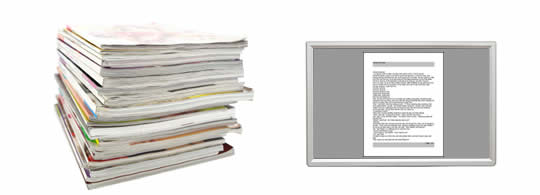Does Paper Outweigh Digital?
We know that viewing information on paper causes more emotional processing in the brain than the same information viewed on a screen (see Paper Beats Digital for Emotion), and there’s another way paper might be better: its weight. The idea comes from the same study that found that softer chairs increase negotiating flexibility.
That study, Incidental Haptic Sensations Influence Social Judgments and Decisions, also compared the effect of the weight of a clipboard. Ackerman, Nocera and Bargh asked subjects to study a job candidate by looking at a resume placed on either light or heavy clipboards. The people who were given the heavy clipboards judged the applicants to have a more serious interest in the position than the light clipboard group.
For an in-depth discussion with one of the researchers, see John Bargh on Priming.
Weighty Words
As bizarre as this effect sounds, our language echoes it. “Heavy” is a near synonym for “serious” in some contexts (say, literature or music). The concept of “gravitas” neatly combines both elements. And our print practices reflect it as well. Documents that are designed to impress the recipient are almost always printed on heavier weight stock, and may include features like a heavy varnish coating that further add to the perception of weight.
Getting back to the paper vs. digital question, it strikes me that the weight effect could manifest itself there, too. It seems likely that a similar comparison, viewing a heavy print document vs. reading the same “weightless” text on a screen, might show the same sort of effect. If that’s true, then the print document would convey more “serious” impact than the digital version.
Until someone actually tests the paper vs. digital “weight” comparison, there are still some neuromarketing takeaways from the clipboard tests:
- A heavier document will create a more serious impression than a lighter one.
- Since tactile sensations so clearly influence our subconscious perceptions, other characteristics of a printed piece – rigidity, texture, embossing, die cuts, etc. can all have an effect.
- If you can’t afford a heavy printed piece, have the reader hold a brick while viewing your information. (That’s a joke, but only because handing a sales prospect a brick might seem a bit strange. The experiments show that even an unrelated tactile sensation can influence behavior.)

